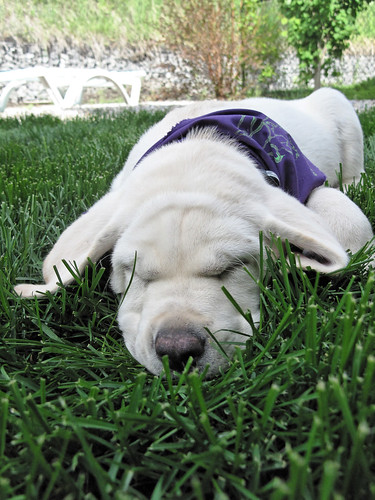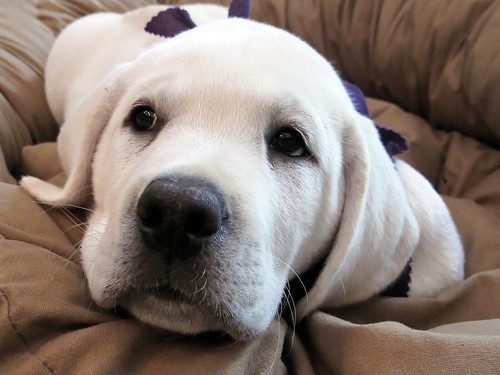Labrador retrievers were originally raised to be hunting dogs. The reason for this is that they are very intelligent and can easily adapt to changes. In addition, they can follow instructions without any difficulty. These reasons make them one of the most lovable breeds in the world. However, you still need to potty train them just like other dogs.
Don’t worry. As mentioned earlier, the Labs are very smart so it will not be so stressing for you to toilet train your cute pup. The tips below can help you:
The first thing you need to do is to determine the age of your pup. The ideal age is about 8 weeks. If you acquired your pup from someone else, ask your contact person about the age. Your pup should also be weaned from breastfeeding.
Observe your puppy through a crate. Purchase a crate that can accommodate your pup as he grows. But make sure that the crate is not too big or your pup will poop in that same area. Make it just right for him to move a little.
A big crate will also make him feel alone so pick just the right size. Add beddings and toys into the crate so your pup has something to do in his idle time. His favorite toy will keep him from chewing on his bed.
Implement a schedule of feeding time. Usually, pups have accidents after sleeping or eating. This is the reason why your feeding time should be strictly observed. This way, you will be able to estimate when your pup will “go”.
Pick a spot in your yard where your pup can go potty. This area should be the permanent toilet area of your dog. One way to have your pup relieve itself is by using a command word. You can say “potty” to signify that it is time to “go”.
This breed loves it when they please others. Make sure that your dog knows that he is doing the right thing. After your pup “goes”, reward him with a treat, praise him, or pat his head.
Have your pup take potty breaks every two hours. This breed may be big but they have fairly small bladders that are the opposite of their size. Take him to his designated area to let him pee or defecate. Or better yet, take him to his toilet area every after meal and as soon as he wakes up.
If your pup accidentally “goes” inside the house, do not punish him. Clean the mess he made and show him to his toilet area. Do not hurt, spank, or shout at him. Again, labs are very smart so they can absorb instruction easily. Just be patient and he will get what you want him to do after several tries.
Keep a close eye on your pup. As soon as you notice that he is about to pee or defecate inside the house, immediately pull him to his toilet area.
The key to potty training your Lab puppy is consistency. Just stick to your feeding schedule, the potty breaks, and of directing him where to go to relieve himself. Patience is another important value here. Never reprimand nor hit your pup if he makes accidents. He will surely get it the next time if tell him again what to do.
Good luck!
Author’s bio: Marcy Gray is a dog lover who likes to write about her experiences in dog care. In addition, she likes to write other topics such as Removing Skin Tags Yourself
Technorati Tags: All About Labradors Labrador Retriever Labradors Dogs Pets Potty train your Labrador Retriever Puppy dog potty training












